You can paint over spray paint if you sand the finish and apply a primer coating first. Sanding removes the sealer and glossy topcoat, while a primer coating enhances the paint penetration and adhesion.
To paint over spray paint, cover the work area, find the existing finish type, remove the sealer coating, sand the finish, apply primer, and apply the new paint.
Does Paint Adhere Over Spray Paint?
Paint does adhere over Spray paint, but the finish must be sanded and primed.
Sanding will abrade the existing finish to create tiny pores so the paint can stick, and remove the glossy finish.
The primer will serve as an undercoat, cover the imperfections and holes in the surface, and allow the paint to adhere better.
Which Paint Types Can You Use Over Spray Paint?
You can use water-based and oil-based paints over Spray paint as long as the finish is primed and sanded.
However, water-based acrylic paint is the best to use as it has polyacrylates (or synthetic acrylic resins) that stick well to a sprayed finish and produce a vibrant color that covers the existing finish.
Don’t use thin or light-colored paint if you want to cover a dark sprayed finish. The spray paint will bleed through if the new paint has a lighter color. Use a paint with a similar color shade and the same base (solvent) to get the best results.
No type of paint will stick if the sprayed finish is sealed with a waterproof topcoat. Sealers, such as polyurethane, produce a moisture-resistant layer that protects the surface underneath. You must either strip the topcoat off or sand it, and apply a primer coating before painting over it.
Is Sanding and Priming Necessary? (Comparison Chart)
Here’s a chart that tells you if you need to prime or sand:
| Water-based spray paint | Oil-based spray paint | |
|---|---|---|
| Sanding | Necessary | Necessary |
| Priming | Not necessary | Necessary (Use water-based primer over it). |
| De-glossing | Not needed since it doesn’t have a glossy finish. | Necessary as they have a gloss that will repel paint. |
| Water-based paint | It will stick | It will not stick without a primer |
| Oil-based paint | It will stick | It will stick better with a primer |
How To Paint Over Spray Paint?
To paint over Spray paint, do the following things.
- Cover the Work Area.
- Find the Existing Finish Type.
- Remove the Sealer Coating.
- Sand the Finish.
- Apply Primer.
- Apply the New Paint.
The tools you need for this project are listed below.
- Rags or cloth
- Sandpaper
- Drop sheet
- Tape
- Primer
- Acrylic paint
- Brush
- A sealer (optional)
- Paint stripper (only if the spray paint was sealed)
1. Cover the Work Area
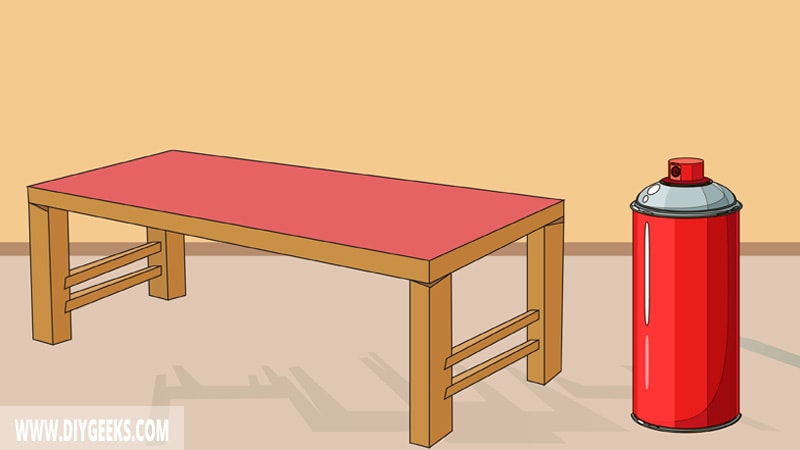
Cover the work area to prevent spills from splattering on the floor or walls. You have to cover everything using a large drop sheet and tape to hold the sheet down.
Remove nearby objects and open all windows and doors for proper ventilation. If you are using oil-based paint, it’s recommended to work outdoors.
2. Find the Existing Finish Type
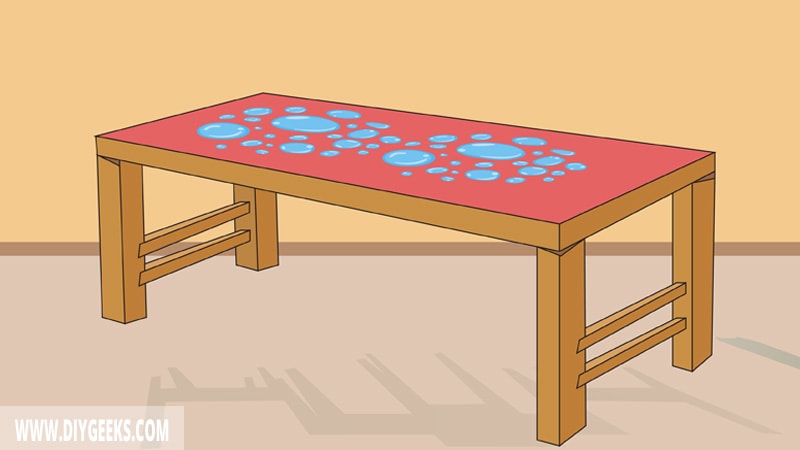
Find the existing finish type to know which prep steps to take.
To find the type of the existing finish, do the following things.
- Add a few water drops over the existing finish.
- If the water changes color, the spray paint used is oil-based. You need to prime it.
- If the water remains clear, the finish used is water-based. You don’t need to prime the surface — just sand it lightly.
Check if the existing finish is sealed by inspecting the surface. If the surface is glossy the finish is oil-based or sealed. If the surface is dry and textured, the finish is water-based.
3. Remove the Sealer Coating
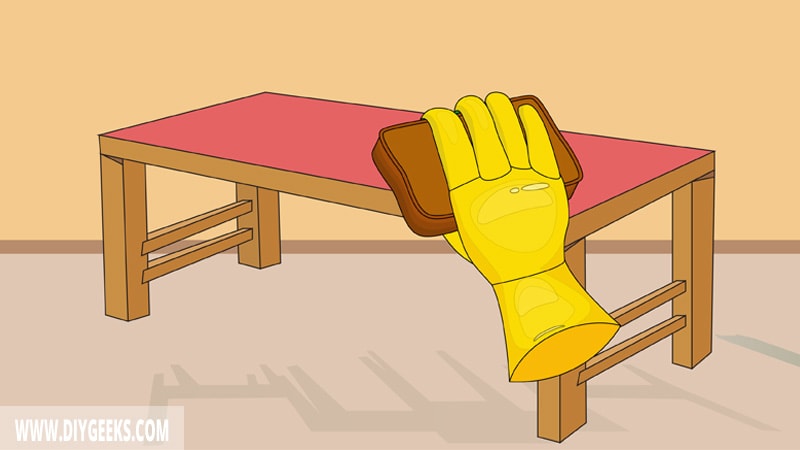
If the spray paint finish is sealed, remove the glossy moisture-resistant layer using coarse-grit sandpaper (40-grit) or paint-stripping paste. You must remove the sealer’s glossy finish as it can prevent new paint from penetrating or adhering.
Coarse-grit sandpaper (40-grit) gradually removes the sealer top coat and reveals the underlying surface finish. A paint-stripping paste penetrates the sealer finish, dissolves the binders, and liquefies the coating.
4. Sand the Finish
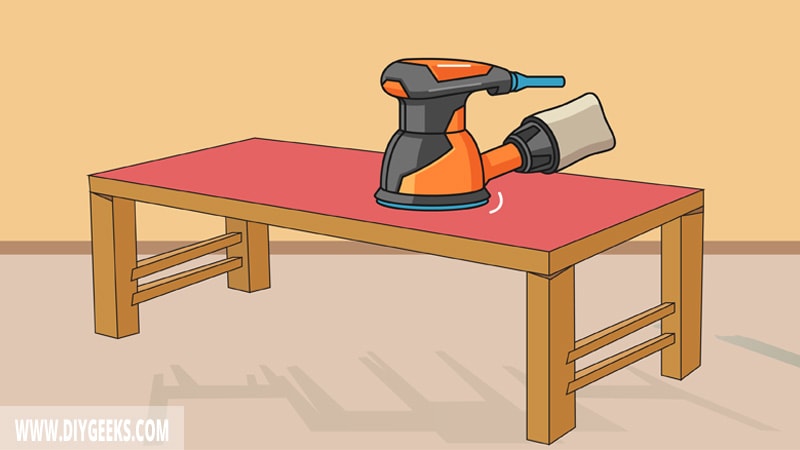
Sand the spray paint finish with fine-grit sandpaper (220-grit) to remove surface imperfections and bumps, and create tiny pores (holes) that the new paint can penetrate and adhere to.
If the finish has too many imperfections, use medium-grit sandpaper (100-grit). Ensure to clean the surface with a damp rag to remove the dust after sanding.
5. Apply Primer
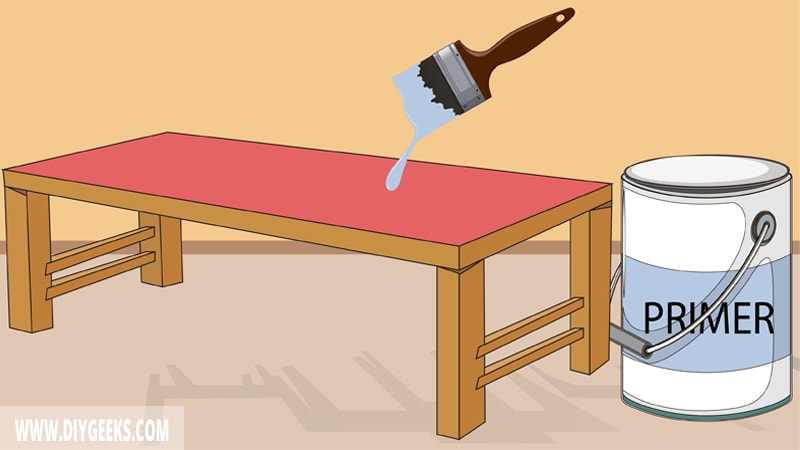
Apply one (1) primer coating over the spray paint finish to cover the finish and create a textured layer that enhances paint adhesion.
6. Apply the New Paint
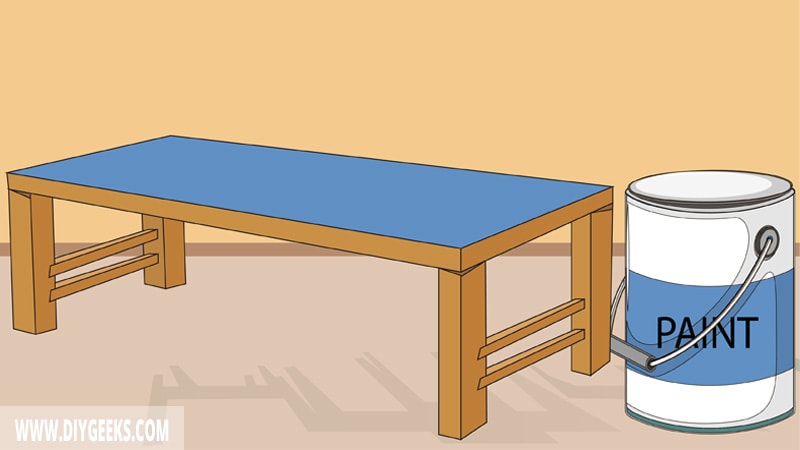
Apply 2-3 paint coats over the spray paint finish using a paint sprayer, roller, or brush. Wait until one coat dries before applying the next one.
Acrylic paint is recommended over spray paint as it has more paint pigments and can cover the spray finish faster.
Seal the new paint finish with a moisture-resistant sealer to protect it from moisture, water, scratches, and weather elements.
Can You Paint Over Spray Primer?
You can paint over water-based spray paint, but you can’t over oil-based spray paint because it will repel any coating that isn’t oil-based. Water-based spray paint allows all types of paint to stick.
Most spray paint and primers are oil-based, so you can’t paint over them with a water-based finish. This is because oil-based finishes have a glossy moisture-resistant and rigid layer that prevents penetration.
If you paint over a sprayed oil-based primer with water-based paint, the finish flexibility will be affected since it can’t move over the rigid oil-based primer. This causes the finish to crack or blister.
However, if the water-based spray primer has cured, you can apply all types of paint over it.
Which Types of Paint Can You Apply over Spray Paint?
The types of paint you can apply over spray paint are listed below.
Latex Paint
You can apply latex paint over a sprayed finish only if you sand and prime the finish first. Sanding removes imperfections and the glossy layer, while priming provides a smooth surface for the latex paint to adhere to.
Latex paint is water-based and can’t be used over oil-based or sealed finishes without priming as it won’t stick. You must sand and prime the first to remove the glossy layer.
Don’t apply latex paint over graffiti spray paint as it contains synthetic oils and chemicals that repel it. Remove the graffiti using a stripping compound or alcohol-based solvent first, then apply the latex.
Latex paint is an ideal choice to use over it as it’s flexible and can withstand temperature changes by expanding in hot weather and contracting when it’s cold. This prevents damage to the surface underneath. However, you must seal it to make the finish last longer.
Emulsion
You can apply Emulsion paint over Spray paint, but you must prime the finish with a water-based primer first.
Emulsion is water-based and won’t stick well to an oil-based sprayed finish. But, if you sand and apply a water-based primer, it will stick.
Emulsion paint sticks well to water-based finishes as they have an identical make-up (formula) and the same solvent.
Spray Paint
You can apply Spray paint over an old sprayed finish, but both must have the same base (or solvent). Don’t apply water-based spray paint over an oil-based finish as it won’t stick.
Chalk Paint
Chalk paint is water-based and has impressive bonding qualities, so it will stick over a water-based spray paint finish. However, if the finish is oil-based, it won’t stick without sanding or applying a primer first.
Wood Stain
You can apply wood stain over spray paint, but you need to sand the finish first.
Wood stain penetrates the surface and doesn’t stop at the top of the layer. So, you need to sand existing to open holes that wood stain can penetrate.
Remove the existing finish first, sand the surface, and apply wood stain for the best results.


